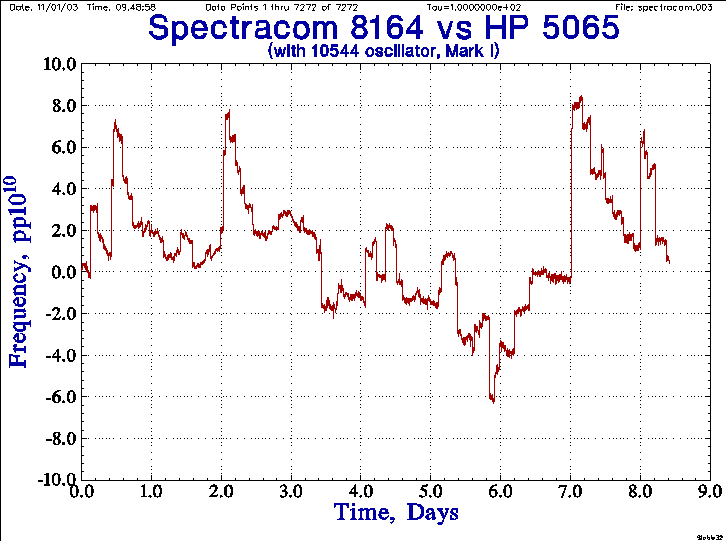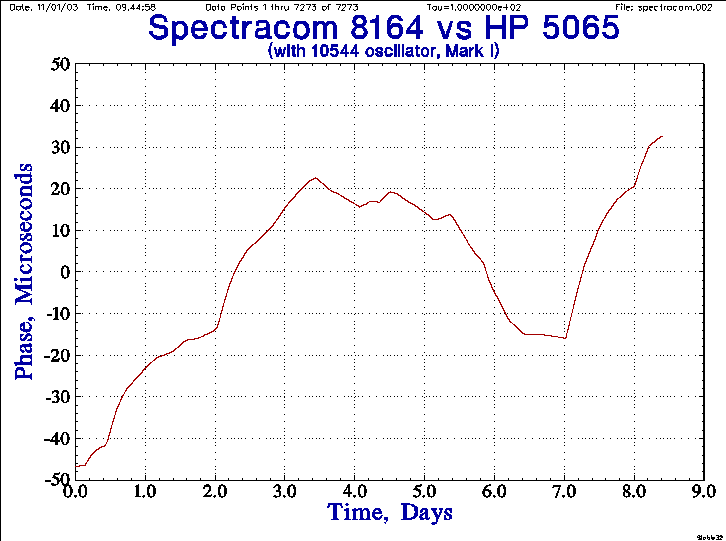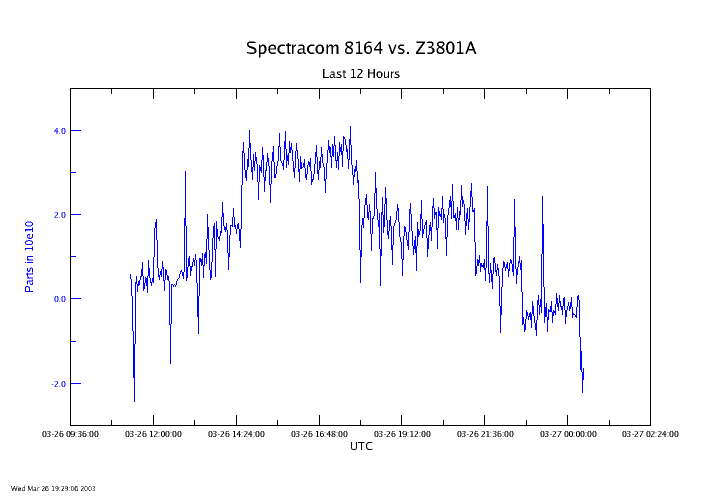Spectracom 8164
WWVB Disciplined Oscillator (Updated)
I acquired a Spectracom 8164, which is a 1980's vintage WWVB phase-tracking receiver. Like the Fluke 207-1, it can produce a phase-plot of a local standard versus WWVB, but it's a lot more modern (and doesn't weigh nearly as much!).
It has several features that make it interesting to the experimenter. In particular, it offers RF outputs (from 100kHz to 10MHz) that are directly locked to WWVB (there's also a 1 pulse-per-second signal available internally; I modified my unit to bring that signal out to the rear panel). What's especially cool is that it also has an internal frequency standard that is disciplined (steered) by a microprocessor system. The standard is maintained within 1 part in 109 of WWVB.
My 8164 had an intermittent Ovenaire 10MHz frequency standard, so I replaced it with an HP 10544 oscillator. To do that, I had to understand how the 8164 steered its oscillator frequency. What I learned about that, as well as some info about the conversion process, is at www.febo.com/time-freq/wwvb/spectracom/efc.html
Here are a couple of charts showing the stability of the 8164 as modified, compared against an HP 5065A Rubidium frequency standard (which had a known offset of a little less than 1x10-12). The output of both units was divided down to 1 pulse per second and a time interval counter was used to measure the changing difference between the two pulses.
Normally, the phase record of a comparison like this is most revealing, but in this case I think that converting the data to a frequency plot is best as it clearly shows the frequency steps as the 8164 makes adjustment:

For completeness, here's the phase record:

Here are a couple of earlier charts, which were made using direct frequency measurement with the counter reference being an HP Z3801A GPS-disciplined oscillator. The first graph shows about five days of data, while the second chart shows the last 12 hours of the run.

